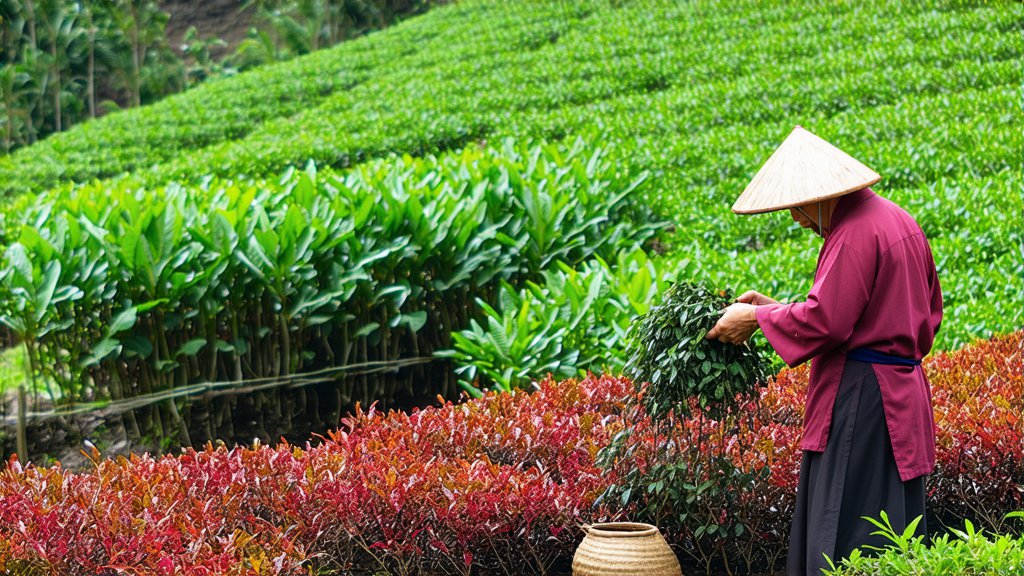
The legacy and art of Chinese tea extend far beyond the familiar green varieties that dominate global markets. Among the diverse spectrum of Chinese teas, Keemun black tea stands out as a testament to centuries-old tradition and meticulous craftsmanship. This article delves into the rich history, varieties, intricate production process, and nuanced appreciation of Keemun black tea, offering an immersive journey into one of China's most revered tea treasures.
Historical Background
Keemun black tea, named after the Qimen County in Anhui Province where it originates, boasts a storied past that dates back to the Tang Dynasty (618-907 AD). It gained significant prominence during the Qing Dynasty (1644-1912), when it became a staple in British afternoon tea culture. Its introduction to Europe marked the beginning of a global appreciation for this exquisite tea variety. The name "Keemun" is derived from the transliteration of "Qimen," reflecting its deep roots in the region's cultural and agricultural heritage.
Varieties of Keemun Black Tea
Keemun black tea encompasses several distinct varieties, each with unique characteristics influenced by specific growing conditions and processing techniques:
-
Huangshan Maofeng: Often referred to as "Keemun Hao Ya," this variety is known for its golden tips and robust flavor profile. It is considered one of the finest grades of Keemun tea.
-
Gongmei: Meaning "palace beauty," Gongmei is made from young leaves and buds, resulting in a delicate and aromatic brew. It is highly sought after for its smooth taste and floral notes.
-
Zhengshan Xiaozhong: This traditional variety is renowned for its full-bodied flavor and rich aroma. It represents the quintessential Keemun experience with its balanced sweetness and slight smokiness.
The Intricate Production Process
The production of Keemun black tea is a labor-intensive process that involves several key stages:
-
Withering: Freshly harvested tea leaves are spread out in thin layers to wilt under natural sunlight or controlled conditions. This step reduces moisture content and initiates oxidation.
-
Rolling: The withered leaves are then rolled to break down cell walls, facilitating further oxidation and releasing essential oils. This process can be done manually or using specialized machinery.
-
Oxidation: Rolling accelerates oxidation, where polyphenols in the leaves react with oxygen to form theaflavins and thearubigins, compounds responsible for the tea’s color and flavor. The leaves are spread out and allowed to oxidize until they reach the desired level of browning.
-
Firing: After oxidation, the leaves are dried using hot air or pans to halt oxidation and reduce moisture content to about 3-5%. This step also develops the final flavors and aromas of the tea.
-
Sorting and Grading: The dried leaves are sorted based on size, shape, and quality. Higher grades feature more tips and a consistent appearance.
-
Aging: While not always practiced, some premium Keemun teas undergo aging to enhance their complexity and depth of flavor.
Appreciating Keemun Black Tea
Appreciating Keemun black tea requires a keen sense of observation and a discerning palate. Here are some guidelines for an enriching tasting experience:
-
Visual Examination: Observe the dry leaves for uniformity and the presence of golden tips, which indicate high quality. The brewed tea should have a bright, clear color ranging from amber to deep mahogany.
-
Aroma: Before sipping, inhale the aroma of the steeped tea. Quality Keemun tea often exudes a sweet, floral fragrance with hints of fruitiness and a subtle smokiness.
-
Flavor Profile: Take a small sip and let the tea coat your palate. Note the balance between sweetness, bitterness, and astringency. High-quality Keemun tea offers a smooth, rounded flavor with a lingering aftertaste.
-
Mouthfeel: Pay attention to the texture of the tea. A well-crafted Keemun should feel velvety and full-bodied without being overly heavy or harsh.
-
Aftertaste: Savor the aftertaste, which should be pleasant and long-lasting, reflecting the tea's complexity and depth.
Cultural Significance
Beyond its sensory pleasures, Keemun black tea holds profound cultural significance in both China and abroad. In China, it embodies the principles of harmony, respect, and mindfulness inherent in traditional tea culture. Internationally, it has become a symbol of sophistication and refinement, often associated with high tea rituals and social gatherings.
Modern Relevance and Global Impact
In contemporary times, Keemun black tea continues to captivate tea enthusiasts worldwide. Its enduring popularity is attributed to its exceptional quality, adaptability in various blends, and health benefits, including antioxidant properties and potential stress relief. As consumers increasingly seek authentic and high-quality teas, Keemun remains a top choice for connoisseurs and casual drinkers alike.
Conclusion
Keemun black tea is more than just a beverage; it is a cultural artifact that encapsulates the artistry, tradition, and innovation of Chinese tea making. From its historical roots to its modern-day allure, Keemun continues to enchant and educate those who partake in its timeless charm. Whether enjoyed alone in quiet reflection or shared among friends, Keemun black tea offers a window into the rich tapestry of Chinese tea culture and the universal language of tea appreciation.